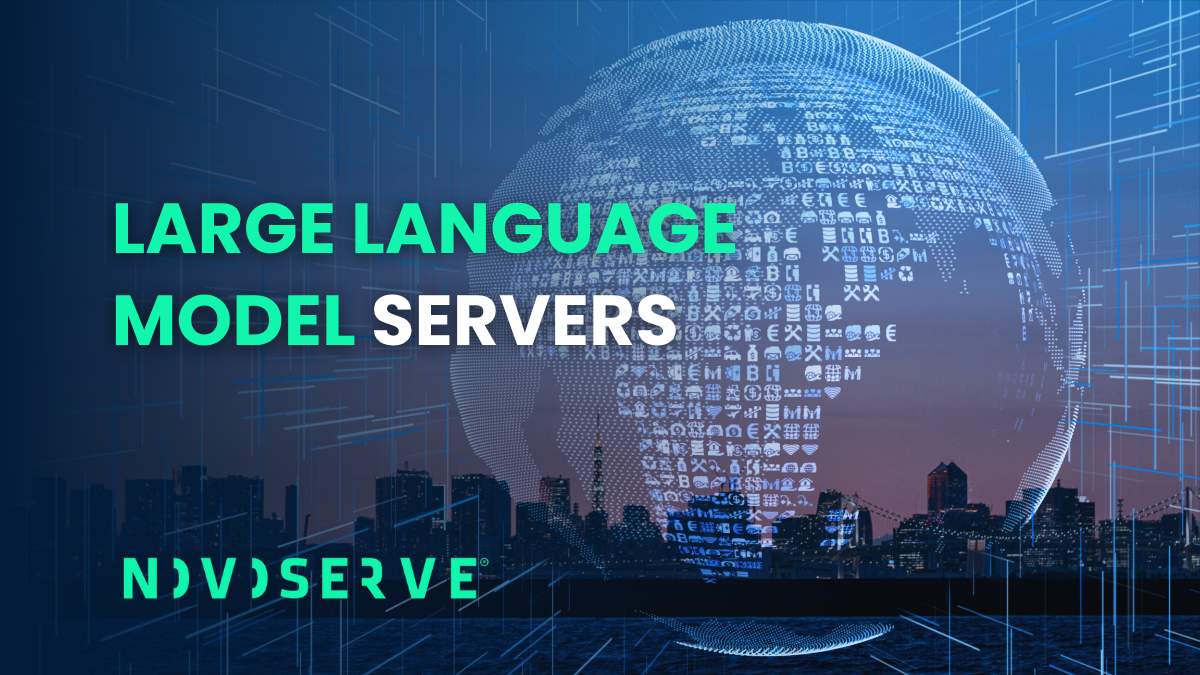Deploying your own LLM server is not only possible—it’s a strategic advantage when you have the right bare metal partner. It isn't like hosting a website; LLMs have a unique and incredibly demanding set of hardware requirements.
Get the hardware wrong, and your project will fail before it even begins. We will break down the critical LLM server hardware components, explain the non-negotiable requirements, and show you how to architect a system that can handle the massive demands of modern language models.
VRAM is king for LLM
Before we discuss anything else, we must address the single most important metric for any LLM server build: GPU VRAM (video memory).
An LLM is, at its core, a massive collection of parameters. To run efficiently, the entire model must be loaded directly into the GPU's own high-speed memory. If you don't have enough VRAM, you simply cannot run the model effectively.
A 70-billion parameter model like Llama 3 can require over 140GB of VRAM just to load in a standard 16-bit format. This is far beyond the capacity of a single consumer-grade GPU.
Your choice of GPU is therefore dictated almost entirely by its VRAM. At NovoServe, our standard Supermicro GPU servers are built for this challenge, scaling up to 8 GPUs per system and offering a massive 640GB of total VRAM in a single chassis, making it possible to run even the largest open-source models.
Choose your open-source LLM
Before you can choose your hardware, you need to know which model you plan to run. The size and architecture of the LLM will determine your VRAM and compute needs. Open-source models like Llama, Mistral, and Falcon offer incredible power, but they vary significantly in size.
Choosing the right model is a trade-off between performance and resource requirements. For a detailed comparison to help you make an informed decision, we recommend reading our guide on the Top Open Source Generative AI Models.

Build LLM server hardware stack
Once you've addressed the VRAM requirement, the rest of the LLM server hardware is designed to support and feed those powerful GPUs without creating bottlenecks.
GPU (The Brain): VRAM is as discussed the priority. Then there is interconnect (NVLink). When using multiple GPUs, the speed at which they communicate is critical. An LLM server with a high-speed interconnect like NVIDIA's NVLink will dramatically outperform one where GPUs communicate over the slower PCIe bus.
CPU (The Conductor): The CPU must be powerful enough to handle data pre-processing and feed multiple GPUs. The most important feature here is the number of PCIe lanes. A CPU from the AMD EPYC series is an excellent choice, as it offers a high number of PCIe lanes, providing a wide data highway to all your GPUs.
System RAM (The Staging Area): While the model runs in VRAM, the massive datasets used for training or fine-tuning must first be loaded into the system's main RAM. Our LLM-ready chassis support up to 1024GB (1TB) of system RAM, ensuring you can handle terabyte-scale datasets with ease.
Storage (The Library): LLM models and their datasets are huge. The speed at which you can load these from storage is critical. High-capacity NVMe SSDs are the only viable choice. Their incredible read speeds can reduce model loading times from hours to minutes.
 Deploy on LLM-ready infrastructure
Deploy on LLM-ready infrastructure
Building your own LLM server from parts is complex. LLM server hosting from a specialized provider like NovoServe offers a faster, more reliable, and often more cost-effective solution.
We maintain a large inventory of LLM-ready chassis that are optimized for AI workloads. Our offerings are built around the flexible and powerful Supermicro X11 and H12 platforms. This allows us to provide a wide range of configurations, from accessible single-GPU Supermicro X11 servers perfect for development and fine-tuning, to multi-GPU Supermicro H12 powerhouses designed for large-scale training and inference.
Get your LLM server deals
How do you run an LLM on a server? You start with VRAM and build out from there, creating a balanced system of high-end GPUs, a high-PCIe-lane CPU, massive system RAM, and ultra-fast NVMe storage.
Choosing the right combination of VRAM and RAM for a 70B parameter model versus a 13B model is a complex calculation. Don't guess. Chat with our infrastructure specialists for a complimentary consultation. They'll help you architect the perfect server for your specific LLM.
Ready to get started? We're currently running special sales deals on our most popular GPU server configurations, perfect for your AI and LLM projects.



